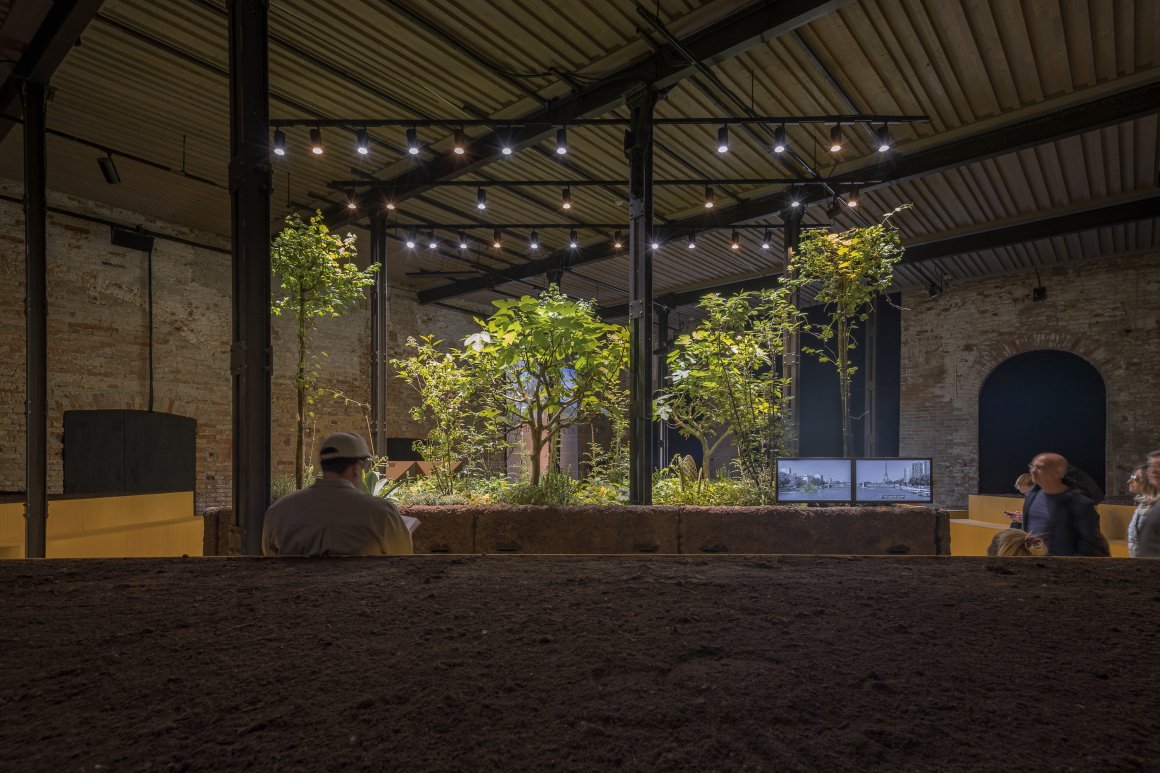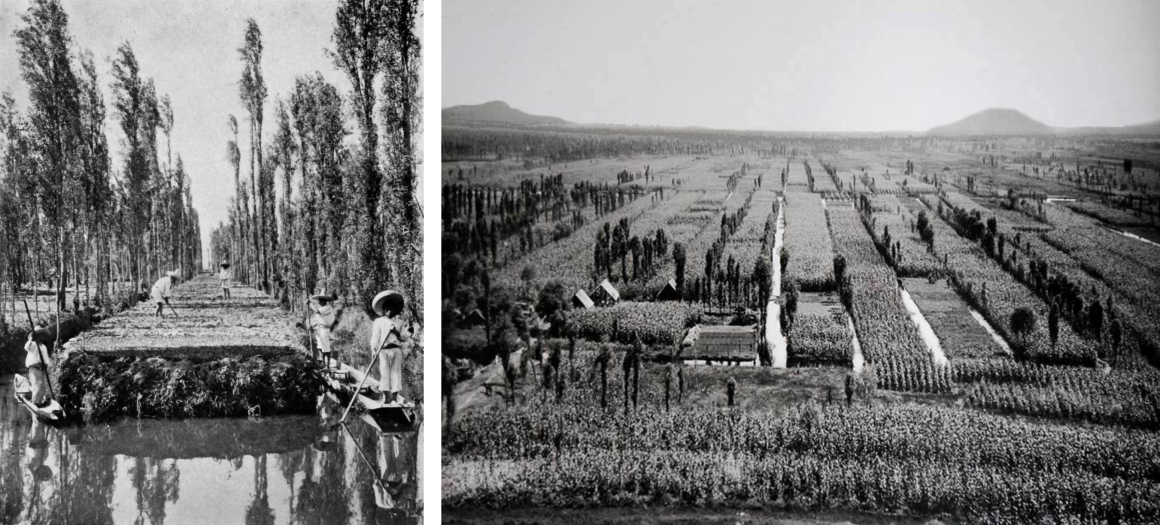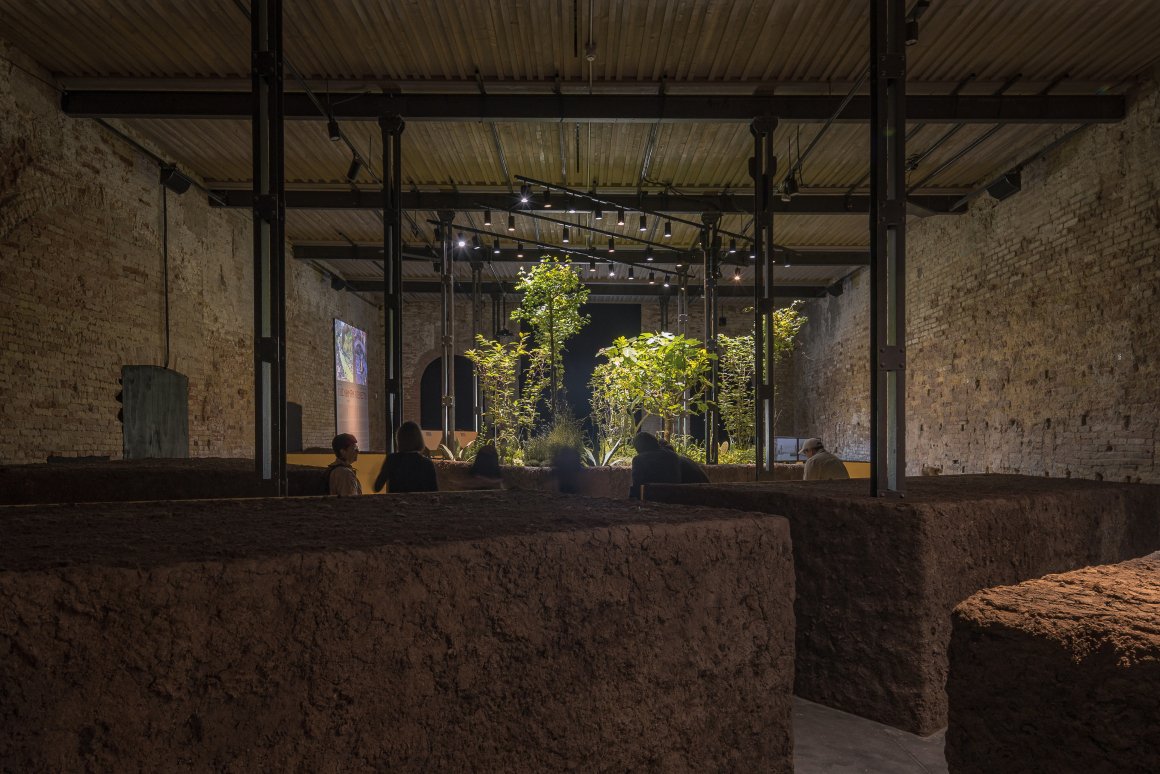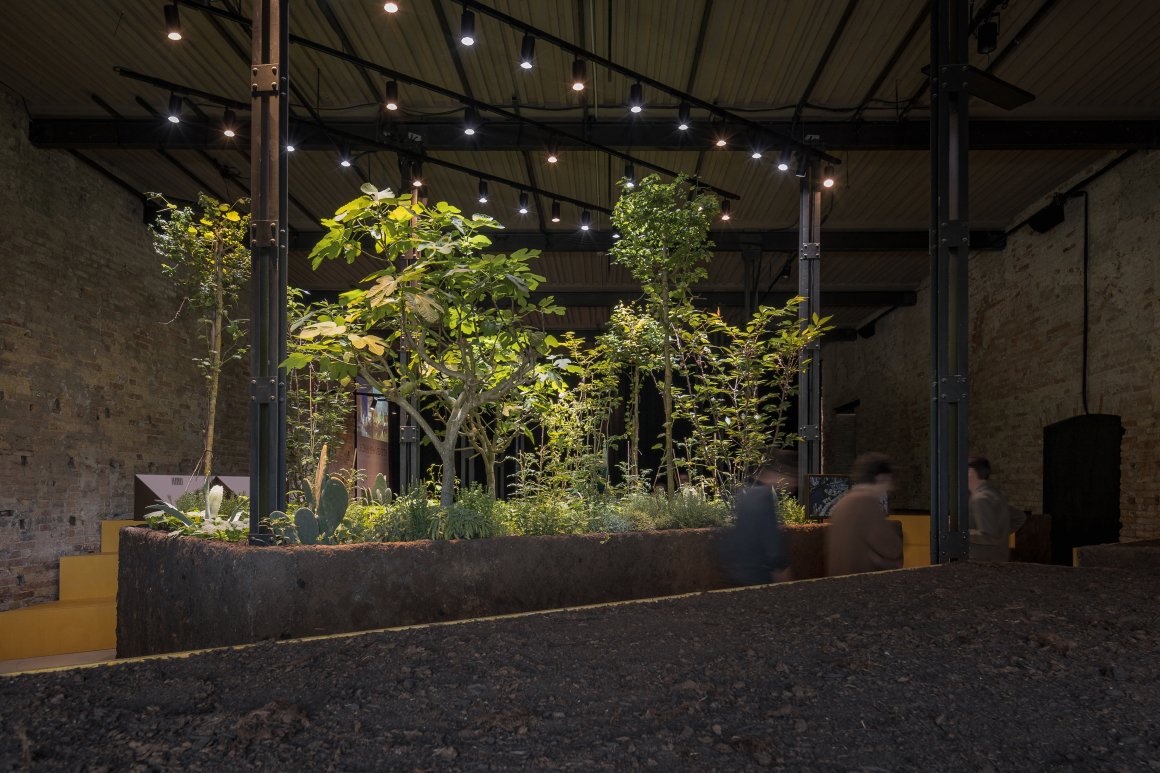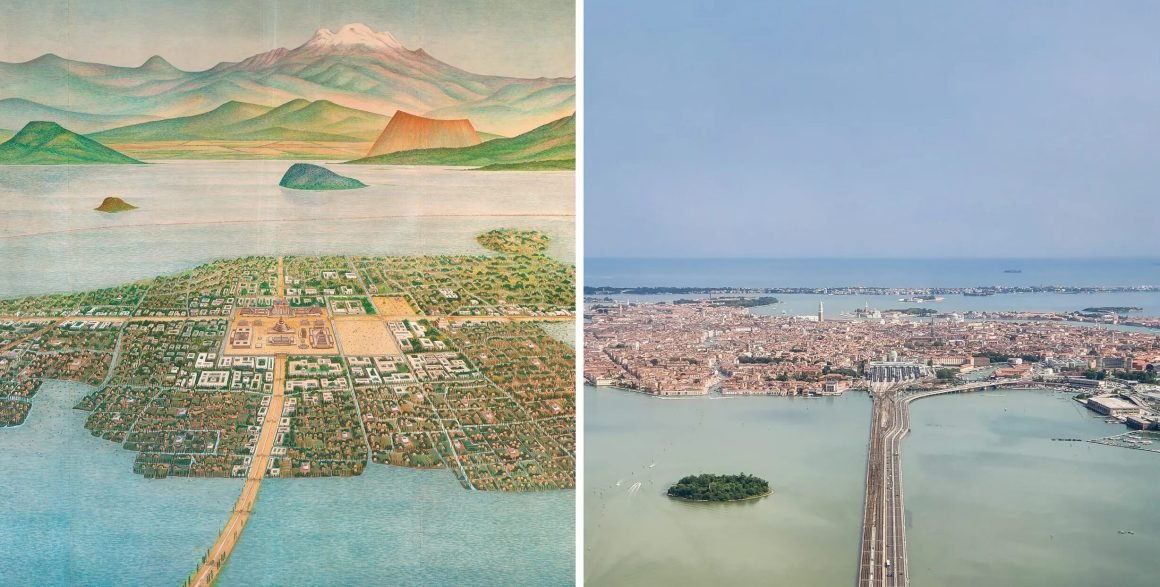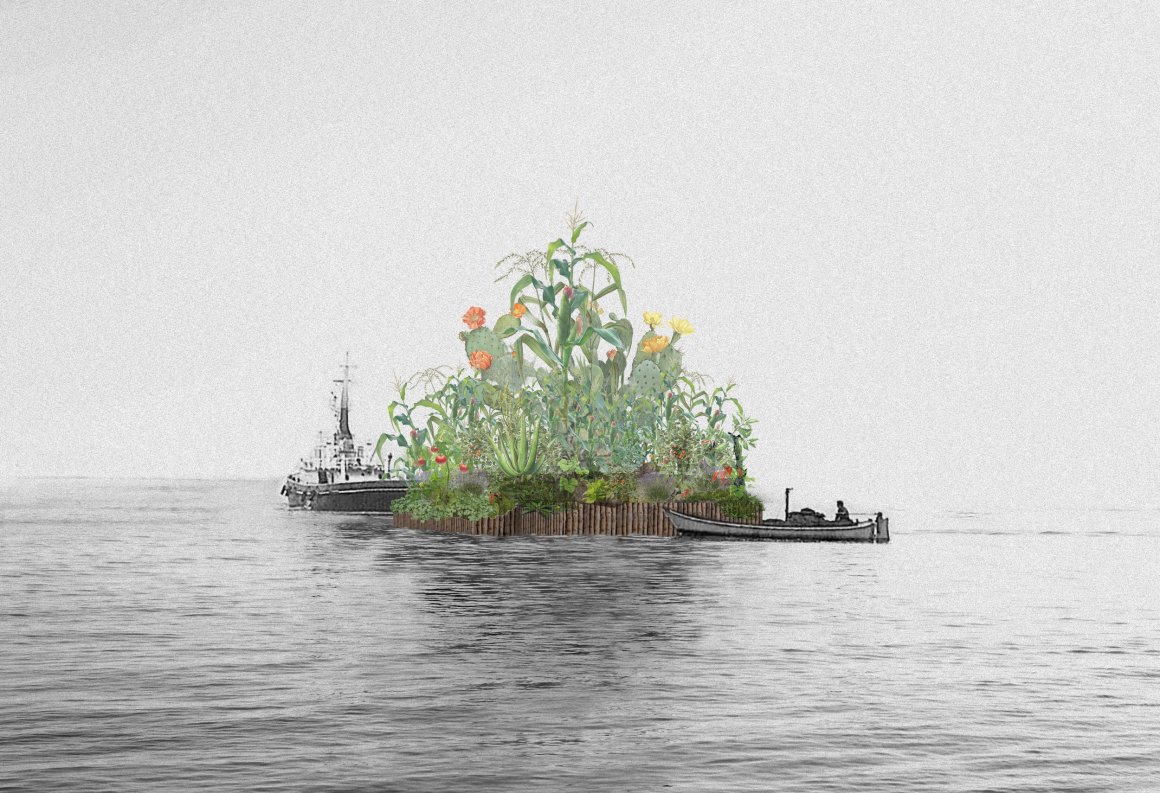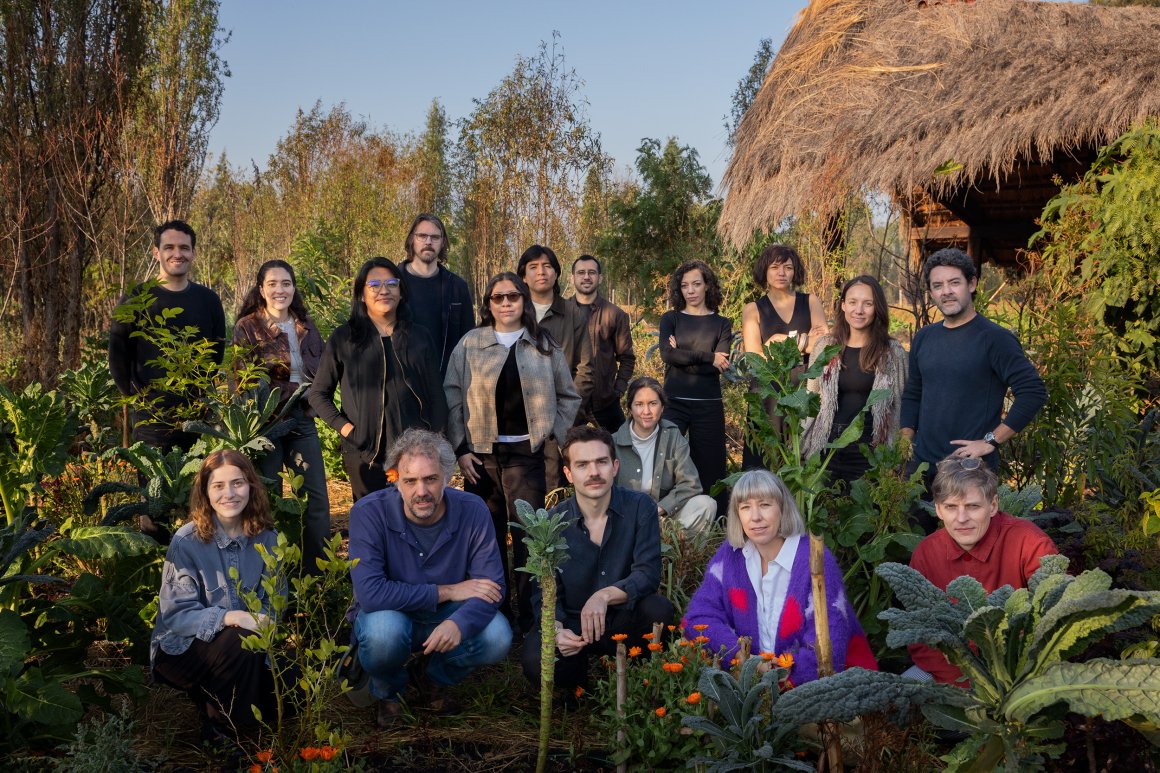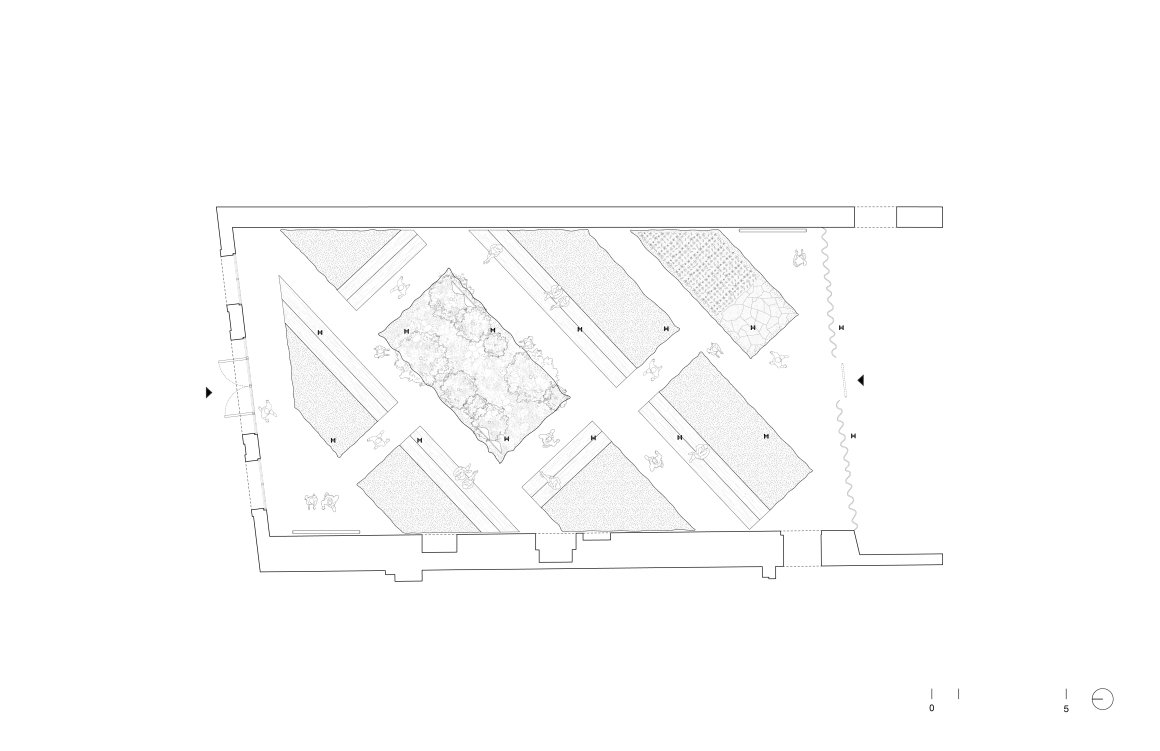本文由 Chinampa Veneta Collective 授权mooool发表,欢迎转发,禁止以mooool编辑版本转载。
Thanks Chinampa Veneta Collective for authorizing the publication of the project on mooool, Text description provided by Chinampa Veneta Collective.
Chinampa Veneta Collective:面对全球生态危机,第十九届威尼斯国际建筑展——墨西哥展区以“Chinampa Veneta”为主题,旨在促使人们思考我们如何居住、耕种和设计我们共同的世界。该项目以“奇南帕”(chinampas)这种古老的农业系统为起点,这一古老的知识将景观、基础设施和技术交织在一起,在威尼斯双年展的背景下被重新构想,为这座标志性城市营造出一个充满生机的环境。
Chinampa Veneta Collective:Faced with the global ecological crisis, the project selected by the Ministry of Culture and the National Institute of Fine Arts and Literature for the 19th International Architecture Exhibition – La Biennale di Venezia promotes a reflection on how we inhabit, cultivate, and design the world we share. Chinampa Veneta starts with the chinampas agricultural system, of Mesoamerican origin and still in force in Xochimilco, a historic lake ecosystem south of Mexico City. This ancient knowledge, which interweaves landscape, infrastructure, and technique, is reimagined in the context of La Biennale, activating a living environment in an emblematic city.



奇南帕是一种拥有四千多年历史的古老农业系统,位于浅湖之中,以矩形块状形式建造,由多层沉积物、淤泥和植被构成。那里种植着花卉、蔬菜和其他食物。其美丽的几何布局除了形成水道外,还增加了湖泊的岸线,为觅食、繁殖和栖息创造了生态位,从而引发了生物多样性的爆发。
奇南帕源自一种古老的观念,即人类是自然生命循环中的积极组成部分,这与现代试图控制自然的做法截然不同。在奇南帕系统中每个元素都同等重要,它们之间形成共生关系,促进生命繁衍、捕获碳、净化水体、生产食物和产生氧气。在当今生态崩溃的边缘,奇南帕为我们指明了未来的方向。
Chinampas are an ancient agricultural system with more than four thousand years of history. They are located in shallow lakes and are built in the form of rectangular blocks with layers of sediment, mud, and vegetation. Flowers, vegetables, and other foods are grown there. Their beautiful geometric arrangements, in addition to forming channels, multiply the banks of the lake, creating ecological niches for feeding, reproduction and shelter, which detonate an explosion of biodiversity.
Each element of the chinampa system is equally important and generates symbiotic relationships that promote life, capture carbon, purify water, and produce food and oxygen. In a world on the brink of ecological collapse, chinampas show us a path to the future.
▽墨西哥河岸延续至今的奇南帕种植
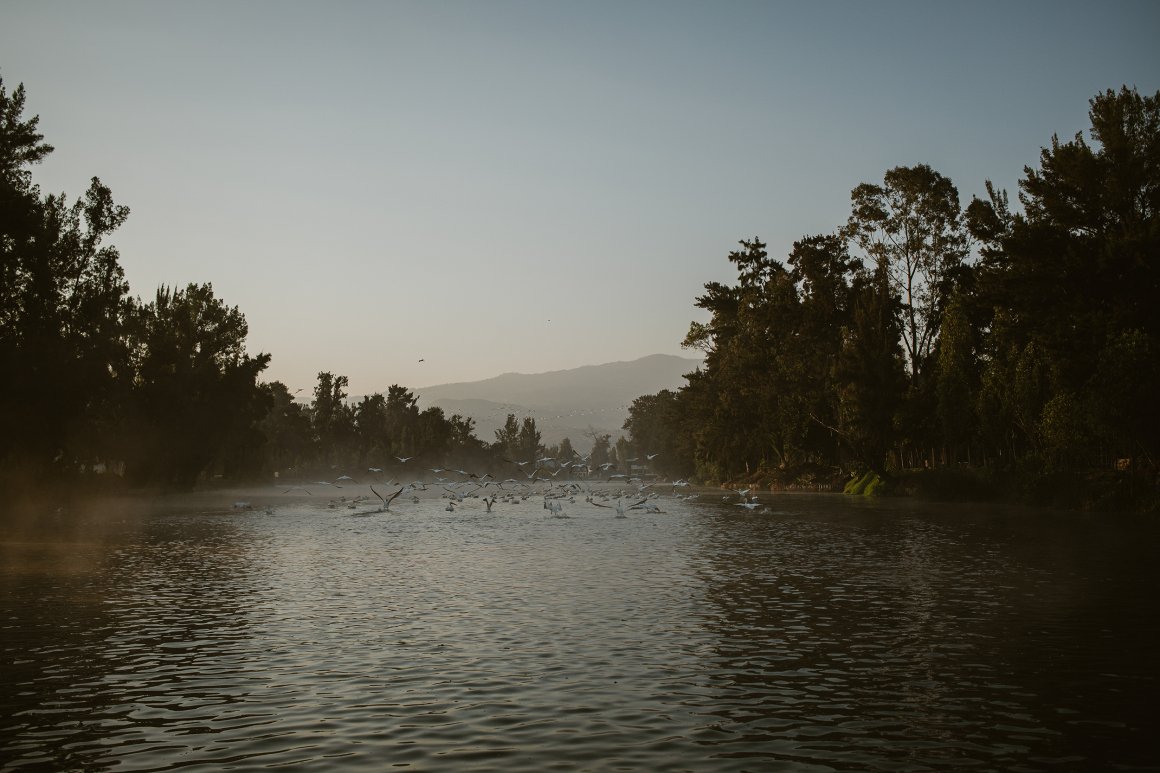
策展人以此为灵感,将建筑设计扩展为一个共生过程,与生态系统、自然界以及社区共同设计。展览强调土壤健康与社会福祉直接相关。策展团队将他们的方案描述为“演绎”,通过两个重现Chiampa系统的项目,将自然过程的概念融入展览。展览的两个部分都与威尼斯的文化背景紧密相连,为这一传统系统增添了当代的诠释。
第一个展品位于军械库内,展示了奇南帕系统。展示了奇南帕(chinampas)在不同生长阶段的生长过程,首先是奇南帕从chapin (一种富含营养的泥浆小方块,内含种子)再生的过程。展览中心是一座活生生的奇南帕,与墨西哥的前辈不同,它采用的是威尼托地区的一种农林复合系统(la vite maritata),其中藤蔓与树木交织生长,同时与传统的奇南帕多作物种植系统共存。
The chinampas were conceived from an ancestral worldview in which humans were an active part of the natural cycles of life, unlike modernity, which desperately tries to control them. In Xochimilco, as in Venice—both declared World Heritage Sites in 1987—we have witnessed the alarming speed with which urban development can consume thriving ecosystems.
Chinampa Veneta is composed of several enactments. One of them is located inside the Arsenale, where a system of chinampas is represented. Each chinampa shows a different moment in their growth process. The enactment begins with the regeneration of a chinampa from a chapin, a small cube of nutrient-rich mud that holds a seed inside. The protagonist is in the center: a living chinampa, different from its predecessors in Mexico, planted with an agroforestry system practiced in the Veneto, la vite maritata—in which the vine grows intertwined with the trees—in coexistence with a traditional Mesoamerican polyculture system: the milpa.
▽奇南帕威尼斯展,提醒我们土壤健康直接关系到我们社会的福祉,并邀请我们想象能够重新整合生命循环的设计过程,使我们的建筑环境不再与自然对立


▽chapin ,一种富含营养的泥浆小方块,内含种子
▽展览中心是一座活生生的奇南帕,与墨西哥的前辈不同,它采用的是威尼托地区的一种农林复合系统(la vite maritata),其中藤蔓与树木交织生长,同时与传统的奇南帕多作物种植系统共存
第二个装置,被设计漂浮在威尼斯泻湖中,就像阿尔多·罗西的“世界剧场”一样,他将剧场视为建筑与想象力之间的支点,能够在不同世界之间架起桥梁。这一次,剧场变成了“奇南帕世界剧场”,以一种自豪的、古老而自然有机的方式出现在威尼斯这座城市的建筑环境面前,为两个湖泊城市之间建立了一种新的联系,它们的水历史反映了为饮用水和领土而进行的激烈斗争。
Another enactment floats symbolically in the Venetian Lagoon, as an analogy to the Teatro del Mondo by Aldo Rossi, who conceived of theater as a fulcrum between architecture and the imaginary, capable of building bridges between worlds. On this occasion, the theater becomes the Chinampa del Mondo and presents itself in a proudly ancestral, natural and organic way, in front of the built environment of the city of Venice, creating a new link between two lake cities whose water histories reflect a political struggle for drinking water and territory.
Chinampa Veneta arrives in Venice to remind us that soil health directly impacts our well-being as a society, and invites us to imagine design processes that reintegrate life cycles, so that our built environment is no longer in opposition to nature.
▽1987年被宣布为世界遗产的威尼斯,曾经繁荣的生态系统被城市发展以惊人的速度消耗着
▽团队设计漂浮在威尼斯泻湖中的种植装置,灵感来自阿尔多·罗西的“世界剧场”
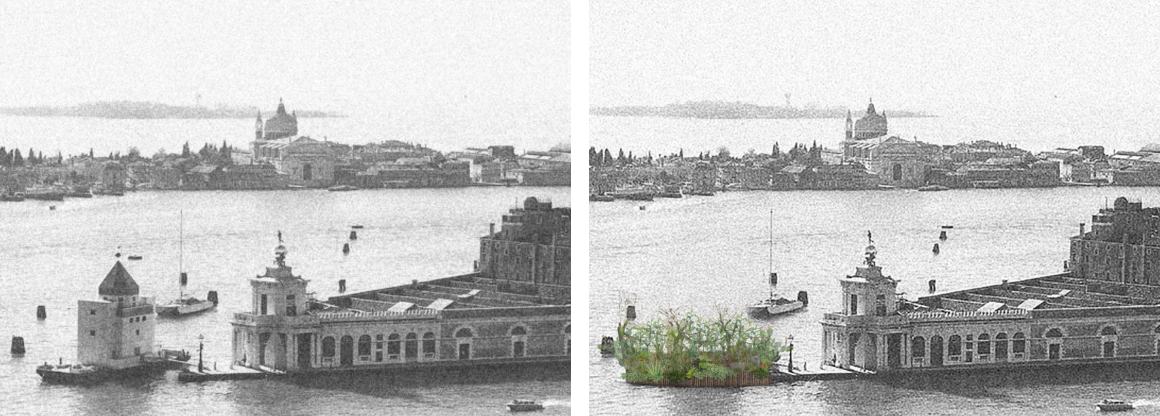
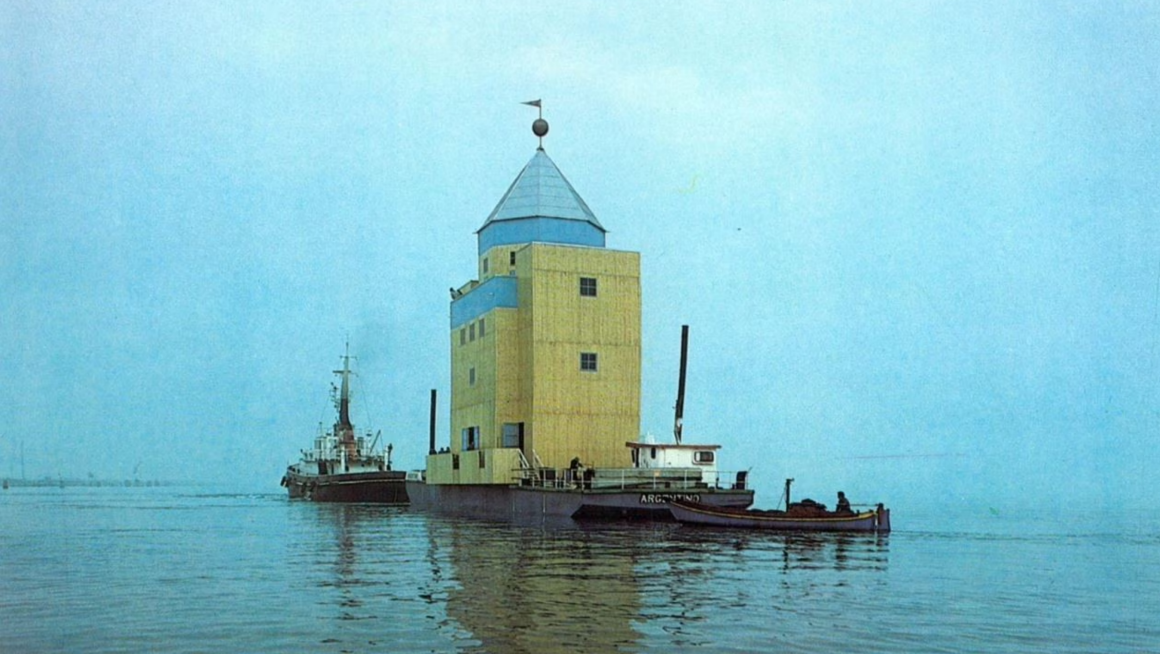
奇南帕威尼斯展,提醒我们土壤健康直接关系到我们社会的福祉,并邀请我们想象能够重新整合生命循环的设计过程,使我们的建筑环境不再与自然对立。在这个不断扩张的世界里,奇南帕让我们停下脚步,回望过去。墨西哥国家艺术与文学学院选中了“维内塔奇南帕”,因其是一个创新的提案,将建筑设计的概念拓展为一种与生态系统、自然环境共同设计的共生过程,并以集体的方式进行。
墨西哥馆位于被称为“军械库”的前海军基地内,将于 2025 年 5 月 10 日至 11 月 23 日开放。开馆活动于五月初举行,来自墨西哥索契米利科和威尼斯的农民进行了交流,分享了他们对各自土地、耕作方式以及再生农业的看法。
我们认可奇南帕系统是一种传承至今的古老智慧。我们对所有通过努力和坚持将其延续下来的人们心怀感激和深深敬意。感谢那些守护它、抵御墨西哥城无休止的城市扩张和市场压力的手。我们特别感谢每一位通过文字和交流在这一旅程中给予我们指引的人。
In a world that never ceases to grow and spread, chinampas force us to stop and look to the past. The National Institute of Fine Arts and Literature selected Chinampa Veneta for being an innovative proposal that expands the notion of architectural design towards a symbiotic process that co-designs with the ecosystem, with the natural environment, and in a collective manner.
The Pavilion of Mexico is located in the former naval complex known as the Arsenale and will be open from May 10 to November 23, 2025. The opening took place in early May and featured a conversation between farmers from Xochimilco and Venice, who shared their experiences with their territories, cultivation practices, and approaches to regenerative agriculture.
We recognize the chinampa system as an ancestral form of intelligence that has endured to this day. We are grateful to and deeply admire all those who, through their work and perseverance, have kept it alive. Thank you to the hands that care for it and resist the overwhelming urban expansion of Mexico City and the pressures of the market. We are especially thankful to everyone who, through their texts and conversations, has guided us throughout this journey.
▽团队人员由城市设计师、建筑师、景观师、种植师组成
▽项目设计图纸
Comissioner: José María Bilbao Rodríguez
Chinampa Veneta Collective: Estudio Ignacio Urquiza , Ana Paula de Alba, Estudio María Marín de Buen, ILWT, Locus, Lucio Usobiaga Hegewisch , Nathalia Muguet, Pedro&Juana
Chinampa Veneta team:Aldo Urban, Ana Paula de Alba, Ana Paula Ruiz Galindo, Andrea Mejía, Diego Manzano, Emilio M. Frausto, Federico de Antuñano, Ignacio Urquiza Seoane, Isabel Brocado, Jachen Schleich, Javiera Elicer, Lucio Usobiaga Hegewisch, Lucero Chaires, María Marín de Buen, Martina Duque, Mecky Reuss, Michela Lostia di Santa Sofia, Miguel Ángel Vega Ruiz, Nathalia Muguet, Paulina García Ortíz, Rodrigo Huesca, Sana Frini, Santiago Sitten, Shantal Gabriela Haddad Gómez, Xavier Delgado González, Yavanna Latapí
Photography: Yvonne Venegas, Uta Gleiser, Matteo Losurdo, Ricardo de la Concha
Image editing and digital processing: Arturo Arrieta
Press Contact: María Marín de Buen,+52 55 5451 2393, info@chinampaveneta.com
“ 土壤健康直接关系到我们社会的福祉,将建筑设计扩展为一个共生过程,与生态系统、自然界以及社区共同设计。”
审稿编辑:junjun
更多 Read more about: Chinampa Veneta Collective
Nguồn: mooool



